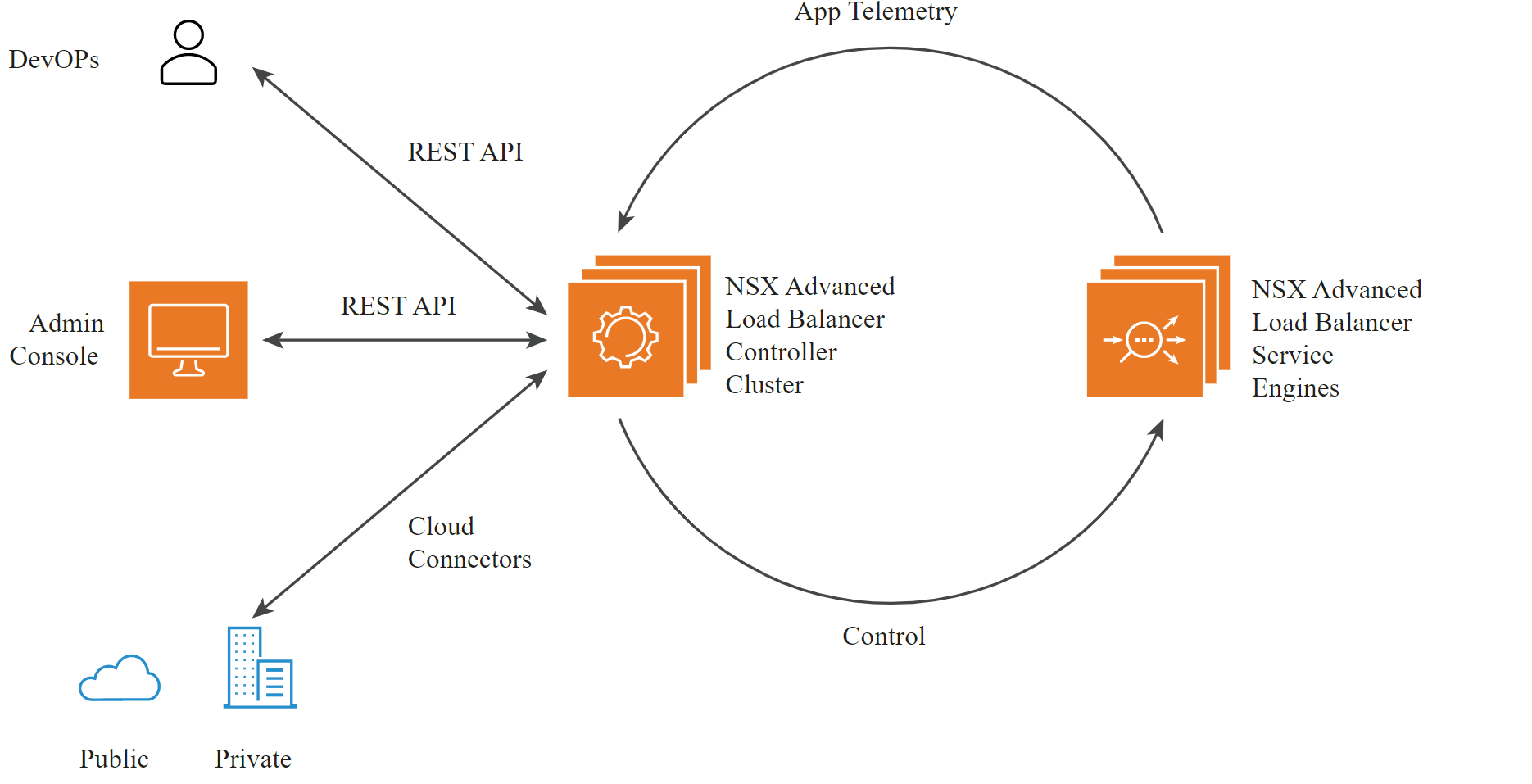Avi Load Balancer is built on software-defined principles, enabling a next-generation architecture to deliver the flexibility and simplicity expected by IT and lines of businesses.
The Avi Load Balancer architecture separates the data and control planes to deliver application services beyond load balancing, such as application analytics, predictive autoscaling, micro-segmentation, and self-service for application owners in on-premises or cloud environments.
The platform provides a centrally managed, dynamic pool of load balancing resources on commodity x86 servers, Virtual Machines (VMs), or containers, to deliver granular services close to individual applications. This allows network services to scale up without the added complexity of managing hundreds of disparate appliances.

Avi Load Balancer provides out-of-the-box integrations for on-premises or cloud deployments. These integrations with private cloud frameworks, software-defined network (SDN) controllers, container orchestration platforms, virtualized environments, and public clouds enable turnkey application services and automation.
Avi Load Balancer integrates with the following ecosystems:
Bare Metal (Linux Server Cloud)
No-Orchestrator Cloud
VMware vCenter
VMware NSX-T
OpenStack
Amazon Web Services
Microsoft Azure
Google Cloud Platform
The Avi Load Balancer consists of:
The Avi Load Balancer Controller or Controller cluster that functions as the control plane.
The Service Engines(SEs) that function as the data plane.